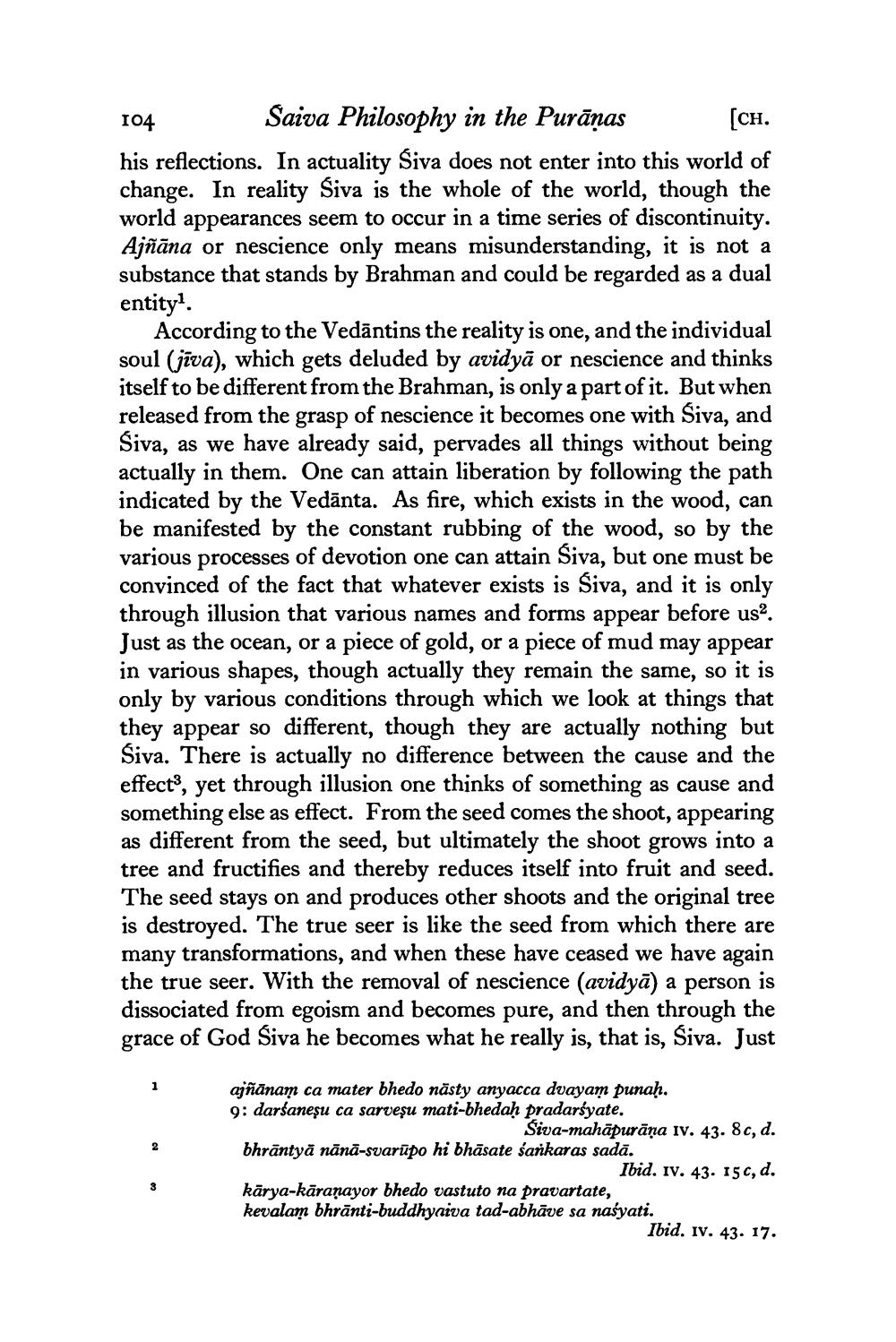________________
104
Saiva Philosophy in the Purāṇas [CH. his reflections. In actuality Siva does not enter into this world of change. In reality Siva is the whole of the world, though the world appearances seem to occur in a time series of discontinuity. Ajñāna or nescience only means misunderstanding, it is not a substance that stands by Brahman and could be regarded as a dual entity?
According to the Vedāntins the reality is one, and the individual soul (jīva), which gets deluded by avidyā or nescience and thinks itself to be different from the Brahman, is only a part of it. But when released from the grasp of nescience it becomes one with Siva, and Siva, as we have already said, pervades all things without being actually in them. One can attain liberation by following the path indicated by the Vedānta. As fire, which exists in the wood, can be manifested by the constant rubbing of the wood, so by the various processes of devotion one can attain Siva, but one must be convinced of the fact that whatever exists is Siva, and it is only through illusion that various names and forms appear before us. Just as the ocean, or a piece of gold, or a piece of mud may appear in various shapes, though actually they remain the same, so it is only by various conditions through which we look at things that they appear so different, though they are actually nothing but Siva. There is actually no difference between the cause and the effect?, yet through illusion one thinks of something as cause and something else as effect. From the seed comes the shoot, appearing as different from the seed, but ultimately the shoot grows into a tree and fructifies and thereby reduces itself into fruit and seed. The seed stays on and produces other shoots and the original tree is destroyed. The true seer is like the seed from which there are many transformations, and when these have ceased we have again the true seer. With the removal of nescience (avidyā) a person is dissociated from egoism and becomes pure, and then through the grace of God Siva he becomes what he really is, that is, Siva. Just
ajñānam ca mater bhedo nästy anyacca dvayam punah. 9: darśaneșu ca sarveșu mati-bhedaḥ pradarśyate.
Siva-mahāpurāņa Iv. 43. 8c, d. bhrāntyā nānā-svarūpo hi bhāsate sarkaras sadā.
Ibid. iv. 43. 150, d. kārya-kāranayor bhedo vastuto na pravartate, kevalam bhrānti-buddhyaiva tad-abhāve sa naśyati.
Ibid. iv. 43. 17.




